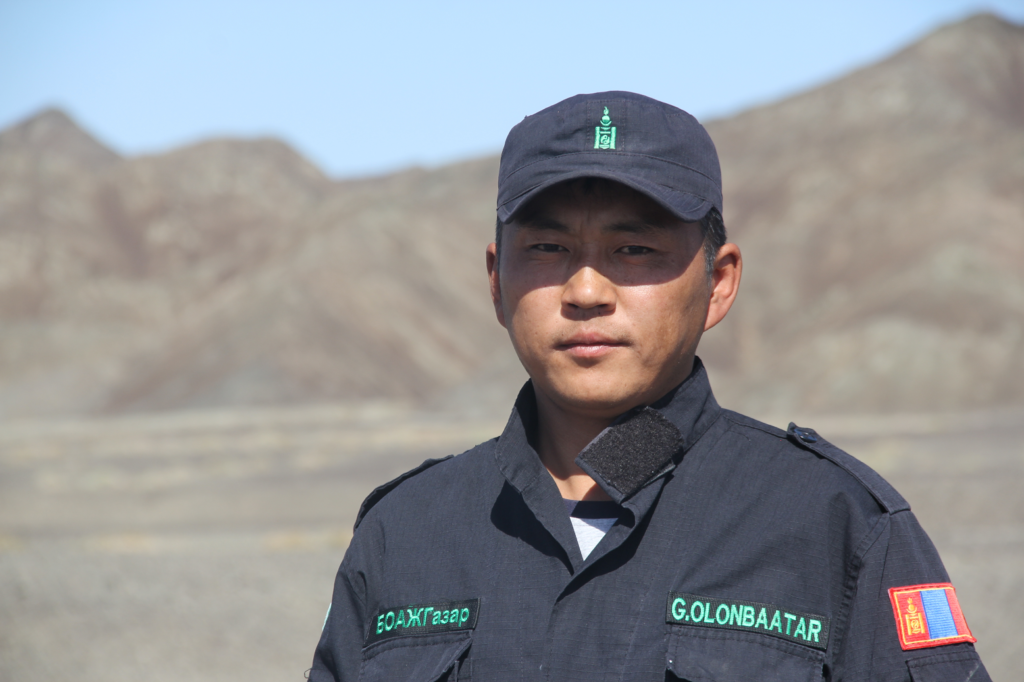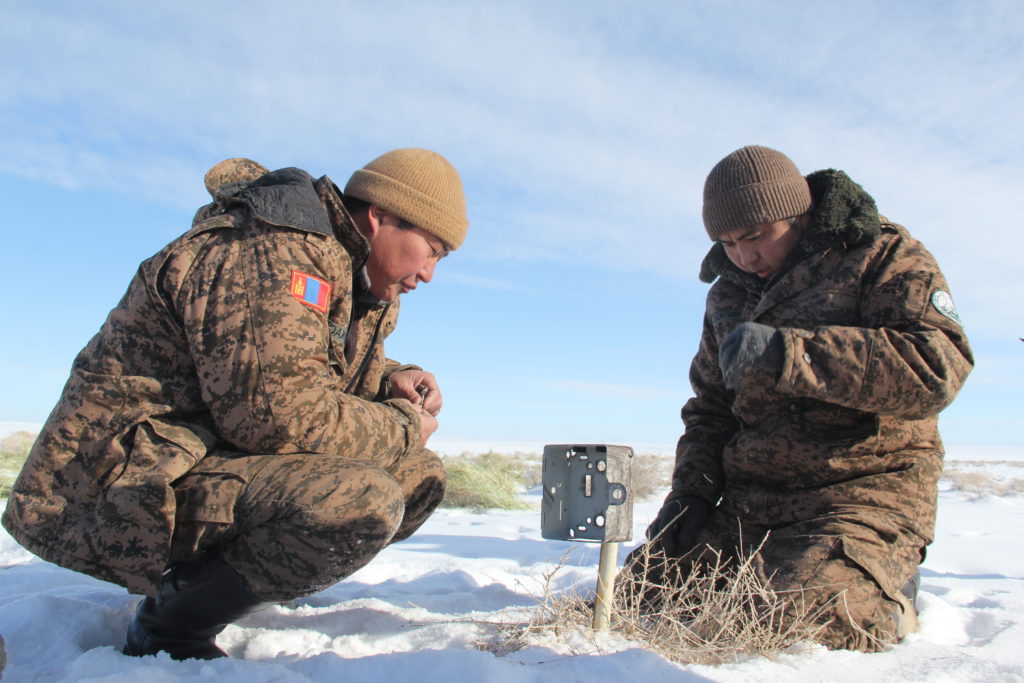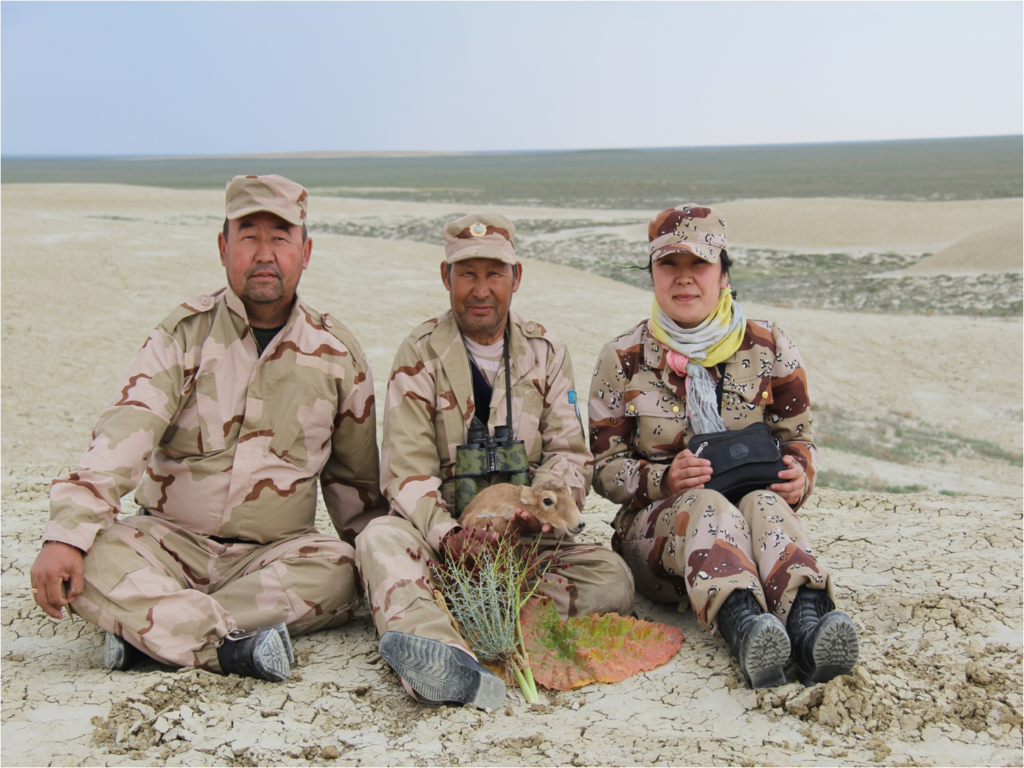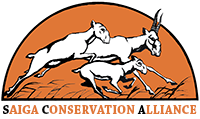World Ranger Day is an annual celebration held on July 31st to honour and commemorate the dedication and sacrifices of conservation rangers worldwide. These brave men and women work tirelessly on the frontlines of conservation, facing various challenges and dangers to safeguard biodiversity and combat illegal wildlife trade.
Conservation rangers are unsung heroes who play a pivotal role in preserving biodiversity and combating illegal wildlife trade. Their dedication, bravery, and sacrifices contribute significantly to protecting our planet’s natural treasures for future generations. Supporting and empowering these frontline guardians is crucial in the ongoing fight against biodiversity loss and the illegal wildlife trade, ensuring a sustainable future for both wildlife and humanity.

Get to know Mongolian ranger, Olonbaatar Ganbat
Olonbaatar Ganbat, one of SCA’s 2023 Excellence in Saiga Protection winners, is one of those dedicated rangers. Individuals on the front tackling biodiversity loss and illegal wildlife trade. We took this opportunity to focus on him and rangers like him and learn what working life is like for a ranger, his motivations and concerns.
Olon was kind enough to sit down and answer some questions and tell us what his daily life is like, in his own words.
1. Can you tell us a bit about yourself and how you became a conservation ranger?
I grew up in a small village called Khokhmort Sum, located in the Gobi-Altai Province. Our family had a long-standing tradition of livestock herding, and I spent much of my childhood surrounded by the vast landscapes and diverse wildlife of the region including Mongolia saiga. My father, a natural science teacher, instilled in me a deep appreciation for the natural world and the importance of protecting it. With this upbringing and my fascination for the environment, I decided to pursue a degree in natural science. I wanted to deepen my understanding of the intricate ecosystems that surrounded me and contribute to their conservation. After completing my studies, I was fortunate enough to secure a position with the local Environmental Protection Agency.
2. What does a typical day in the life of a conservation ranger look like in the field?
A typical day in the life of a conservation ranger in Mongolia, dedicated to protecting saiga and other wildlife and their habitat, can be challenging yet rewarding. Rangers set out on patrols and surveys to monitor and protect the saiga and other wildlife in their designated areas. We cover large territories by motorcycle or by using vehicles depending on the terrain. During patrols, we keep a keen eye out for saiga and other wildlife species. We record observations on animal behaviour, group size, and any signs of poaching or illegal activities. Combating poaching is a crucial aspect of a ranger’s work. We actively patrol areas susceptible to poaching and investigate any reports of illegal hunting or wildlife trade. Lastly, we work closely with law enforcement agencies to apprehend poachers and confiscate illegal wildlife products.
3. In honour of World Ranger Day, could you share a memorable experience or accomplishment from your time as a conservation ranger?
During an inspection, I encountered an individual engaged in illegal hunting who proceeded to point his firearm at me. However, after engaging in a lengthy discussion, I successfully persuaded him to cease his dangerous activity. It also led me to recognize the paramount importance of public outreach over strict law enforcement measures. In addition to possessing skills as a good ranger and conservationist, one must also embody the qualities of a skilled negotiator and psychologist with the ability to assess and comprehend specific situations. Remarkably, the person I confronted during the incident has since become a close friend and continues to support my work wholeheartedly.
4. Mongolia is known for its unique and diverse wildlife. Can you shed some light on the specific challenges faced by conservation rangers in this region?
In Mongolia, rangers find themselves in a perilous situation as they confront armed individuals without the necessary protective equipment. Compounding the challenge is the fact that each ranger is responsible for overseeing a vast and expansive area, stretching their resources and capabilities to the limit. Simultaneously, Mongolia faces increasing risks associated with mining activities, road transport, and infrastructure development. These sectors bring about potential environmental hazards and pose challenges to human safety, demanding comprehensive measures to mitigate their adverse impacts.
5. The saiga antelope is an iconic species in Mongolia. How does your work as a conservation ranger contribute to saiga conservation efforts?
Illegal hunting has significantly decreased, leading to a steady increase in the saiga population in recent years. However, their distribution remains limited within their current range, making them susceptible to drought, harsh winters, and infectious diseases. At present, my efforts primarily revolve around monitoring saiga sightings in new areas and assessing whether they establish permanent populations. Furthermore, future initiatives are underway to translocate saiga to their historical habitats, aligning with the government’s vision.

6. What are some of the major threats to saiga populations in Mongolia, and what measures are being taken to protect them?
Habitat degradation due to livestock overstocking is a major threat to the saiga, particularly in terms of competition for limited resources like water points. To address this, I am currently working with conservation NGOs on a project focused on protecting water points. We employ strategies such as fencing to safeguard headwaters, involving school clubs and herders. This also includes public outreach efforts to raise awareness about the importance of conservation.
7. Can you share any success stories or positive developments in saiga conservation that you have witnessed or been a part of?
Over the past eight years, illegal hunting has posed a significant threat to the Mongolian saiga. To deal with this issue, a memorandum of cooperation has been established between the Provincial Law Control Court, Intelligence, Police, Prosecutor, and Environmental Inspection Agency, leading to a series of collaborative law enforcement activities. I had the privilege of being involved in these efforts. In addition to our public outreach initiatives, we have consistently organised open court hearings to address illegal hunting cases in the high-risk poaching areas of the local counties. These hearings have played a crucial role in resolving such cases and raising awareness about the issue.
8. Being a conservation ranger requires a deep connection with nature and the environment. How does this work impact your personal relationship with the natural world?
Conservation rangers often acquire specialised knowledge about various species, their behaviours, and their ecological roles. This knowledge allows me to develop a deeper understanding of biodiversity and their importance. It can also lead to a sense of stewardship and a commitment to preserving the richness and diversity of ecosystems. Further, as a conservation ranger, I frequently engage in environmental education and outreach, sharing my knowledge and passion with others.
9. In your opinion, why is it important for people to be aware of the work done by conservation rangers in protecting endangered species and habitats?
Some endangered species have deep cultural and historical significance for local communities. When people know about our work, they appreciate the importance of these species from a cultural and scientific standpoint. Further, protected habitats often attract tourists, which brings money to local economies. That means more jobs, better infrastructure, and improved livelihoods for people in the area. When people know about our work, it inspires them, especially the young ones. By raising awareness, we’re empowering future generations to step up and be stewards of the environment. They’ll inherit this planet, so they need to know how to take care of it.
10. Lastly, what message would you like to convey to our readers on World Ranger Day, especially in relation to saiga conservation in Mongolia?
On World Ranger Day, I would like to emphasise the critical role played by rangers in protecting our precious natural environments and wildlife, including the iconic saiga antelope in Mongolia.
Saiga conservation in Mongolia is of utmost importance due to the species’ significance for both the local ecosystem and the global community. These unique antelopes, with their distinctive large noses and magnificent migrations, are an integral part of Mongolia’s natural heritage. However, saiga populations have faced numerous challenges in recent years, including habitat loss, illegal hunting, and disease outbreaks. To our readers, I urge you to recognize the importance of saiga conservation and the efforts made by rangers in protecting these extraordinary creatures. By supporting their work, we can contribute to the preservation of the saiga antelope and its habitat.
Why we celebrate rangers on World Ranger Day


According to the International Ranger Federation and Thin Green Line Foundation’s latest announcement, a total of 148 conservation rangers, from 39 countries were killed (32% due to homicide and 24% due to vehicle accidents) while at work and earning a living.
These alarming numbers highlight the perilous conditions rangers confront daily while striving to protect endangered species and ecosystems. The sacrifices they make underscore the urgent need for greater support and recognition of their efforts in safeguarding the planet’s natural treasures.
Conservation rangers play a vital role in tackling biodiversity loss and illegal wildlife trade, serving as guardians of our planet’s irreplaceable ecological heritage. These dedicated individuals actively patrol wildlife reserves, national parks, and other protected areas to deter poachers, illegal loggers, and traffickers. By enforcing anti-poaching laws and monitoring wildlife populations, rangers act as a critical deterrent against wildlife crime and habitat destruction. Their presence serves to safeguard endangered species and maintain the delicate balance of ecosystems, which is essential for biodiversity preservation.
Furthermore, rangers are instrumental in gathering valuable data and intelligence about the patterns of illegal wildlife trade, helping law enforcement agencies and conservation organisations in their efforts to dismantle illegal trafficking networks. Their knowledge of local terrain and wildlife behaviour is an invaluable asset in protecting vulnerable species from being exploited and trafficked.
Additionally, rangers often engage with local communities, raising awareness about the importance of conservation and promoting sustainable practices, creating a positive impact on wildlife protection and community development.
